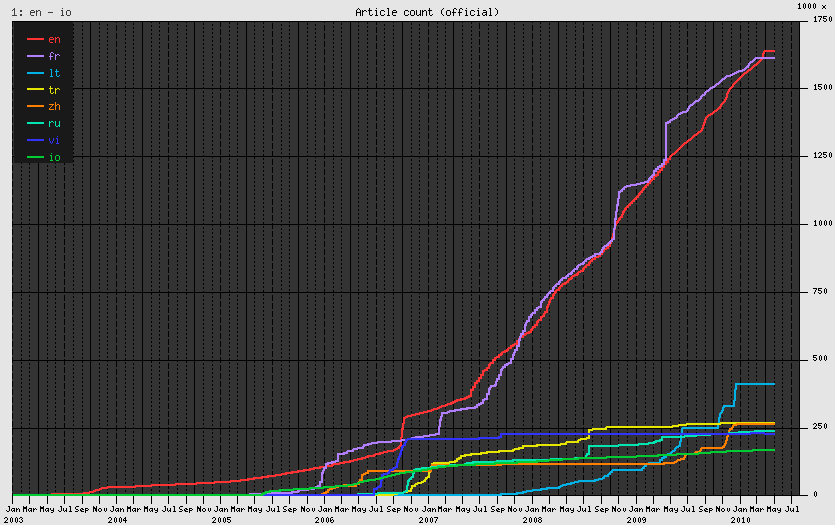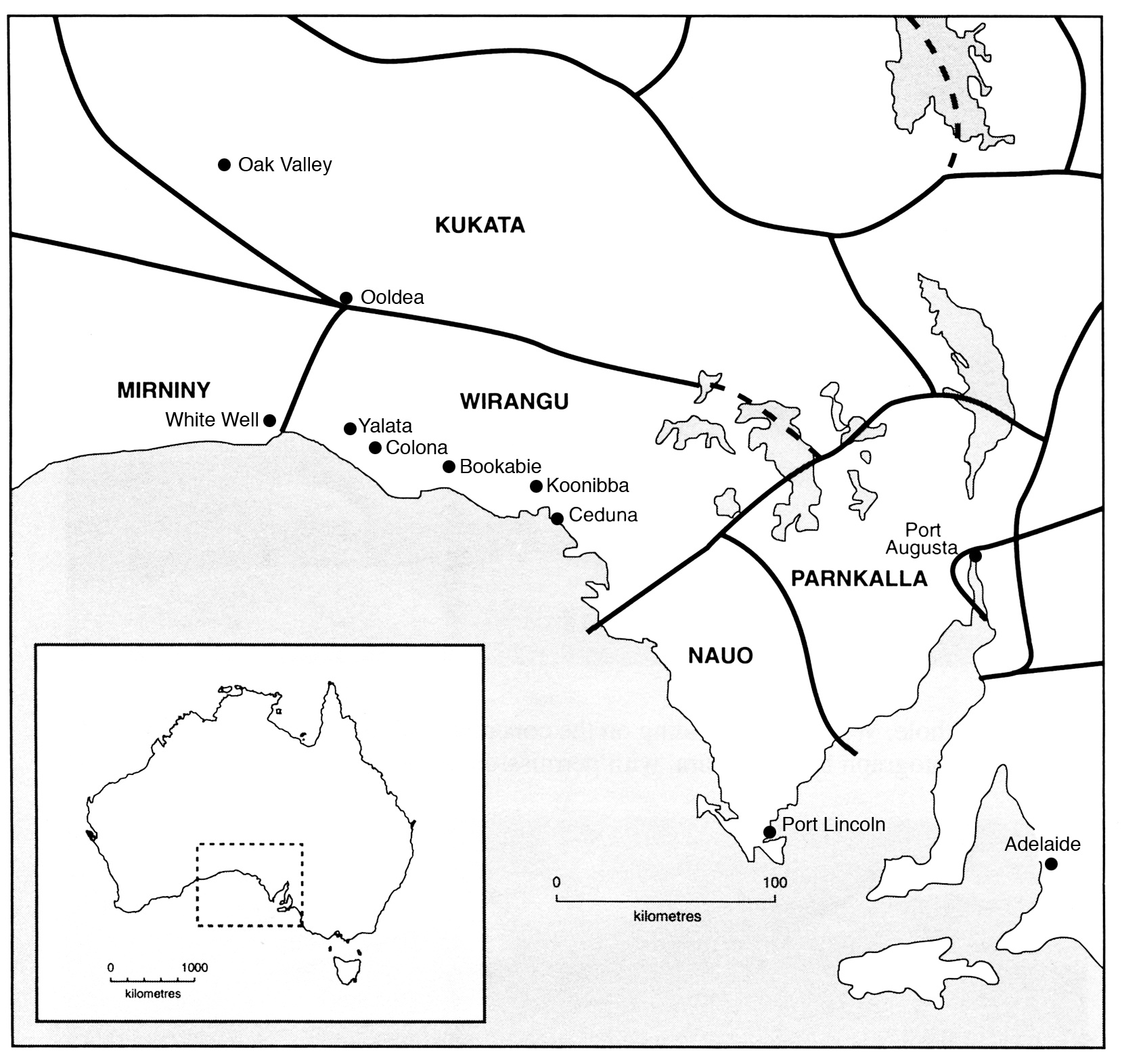|
Thura–Yura Languages
The Yura or Thura-Yura languages are a group of Australian Aboriginal languages surrounding Spencer Gulf and Gulf St Vincent in South Australia, that comprise a genetic relationship (linguistics), genetic language family of the Pama–Nyungan languages, Pama–Nyungan family. Name The name ''Yura'' comes from the word for "person" in the northern languages; this is a lenition, lenited form of the ''thura'' found in other languages, hence ''Thura-Yura''. Similar words for "person" are found in languages outside the group, however (for example 'yura' - 'person' in the Sydney language). Languages The following classification is proposed by Bowern & Koch (2004):Bowern & Koch (2004) ''Australian Languages: Classification and the Comparative Method'' *Thura-Yura **Nangga ***Wirangu language, Wirangu ***Nauo language, Nauo **Core Thura-Yura ***Yura (northern) ****Adnyamathanha language, Adnyamathanha–Kuyani language, Kuyani ****Barngarla language, Barngarla ***Kadli (southern) **** ... [...More Info...] [...Related Items...] OR: [Wikipedia] [Google] [Baidu] |
South Australia
South Australia (commonly abbreviated as SA) is a States and territories of Australia, state in the southern central part of Australia. With a total land area of , it is the fourth-largest of Australia's states and territories by area, which includes some of the most arid parts of the continent, and with 1.8 million people. It is the fifth-largest of the states and territories by population. This population is the second-most highly centralised in the nation after Western Australia, with more than 77% of South Australians living in the capital Adelaide or its environs. Other population centres in the state are relatively small; Mount Gambier, the second-largest centre, has a population of 26,878. South Australia shares borders with all the other mainland states. It is bordered to the west by Western Australia, to the north by the Northern Territory, to the north-east by Queensland, to the east by New South Wales, to the south-east by Victoria (state), Victoria, and to the s ... [...More Info...] [...Related Items...] OR: [Wikipedia] [Google] [Baidu] |
Narangga Language
The Narungga people, also spelt Narangga, are a group of Aboriginal Australians whose traditional lands are located throughout Yorke Peninsula, South Australia. Their traditional language, one of the Yura-Thura grouping, is Narungga language, Narungga. Country In Norman Tindale's estimation the Narungga held some of tribal land on the Yorke Peninsula, running north as far as Port Broughton, South Australia, Port Broughton. Their eastern limits were around the Hummock Range. The following places all lay within Narungga tribal territory - Bute, South Australia, Bute, Wallaroo, South Australia, Wallaroo, Ardrossan, South Australia, Ardrossan, Marion Bay, South Australia, Marion Bay, and Cape Spencer (South Australia), Cape Spencer. Their borders with the Kaurna lay at the head of Gulf St Vincent. Language The Narungga people's language is Narungga language, Narungga, which in the 21st century is being revived under various language revival projects. Social organisation The Na ... [...More Info...] [...Related Items...] OR: [Wikipedia] [Google] [Baidu] |
Wiktionary
Wiktionary (, ; , ; rhyming with "dictionary") is a multilingual, web-based project to create a free content dictionary of terms (including words, phrases, proverbs, linguistic reconstructions, etc.) in all natural languages and in a number of artificial languages. These entries may contain definitions, images for illustration, pronunciations, etymologies, inflections, usage examples, quotations, related terms, and translations of terms into other languages, among other features. It is collaboratively edited via a wiki. Its name is a portmanteau of the words ''wiki'' and ''dictionary''. It is available in languages and in Simple English. Like its sister project Wikipedia, Wiktionary is run by the Wikimedia Foundation, and is written collaboratively by volunteers, dubbed "Wiktionarians". Its wiki software, MediaWiki, allows almost anyone with access to the website to create and edit entries. Because Wiktionary is not limited by print space considerations, most of Wiktiona ... [...More Info...] [...Related Items...] OR: [Wikipedia] [Google] [Baidu] |
Carpobrotus Rossii
''Carpobrotus rossii'' (formerly ''Mesembryanthemum rossii'') is a succulent coastal groundcover plant of the family Aizoaceae. Native to southern Australia, it is known by various common names, including karkalla, pig face, sea fig and beach bananas. ''C. rossii'' can be confused with rounded noon-flower ''Disphyma crassifolium subsp. clavellatum'', which has also been erroneously called "karkalla" and "beach bananas" in the Australian native food trade. Description Karkalla leaves are succulent, long and wide, and curved or rarely straight. The flowers bloom from August through October, are light purple, and are wide. The globular purplish red fruit is about long and wide. Distribution and habitat The species occurs in the states of Western Australia, South Australia, Tasmania and Victoria. It can be found year-round in large patches covering sand dunes A dune is a landform composed of wind- or water-driven sand. It typically takes the form of a mound, ridge ... [...More Info...] [...Related Items...] OR: [Wikipedia] [Google] [Baidu] |
Proto-Thura-Yura
The Yura or Thura-Yura languages are a group of Australian Aboriginal languages surrounding Spencer Gulf and Gulf St Vincent in South Australia, that comprise a genetic language family of the Pama–Nyungan family. Name The name ''Yura'' comes from the word for "person" in the northern languages; this is a lenited form of the ''thura'' found in other languages, hence ''Thura-Yura''. Similar words for "person" are found in languages outside the group, however (for example 'yura' - 'person' in the Sydney language). Languages The following classification is proposed by Bowern & Koch (2004):Bowern & Koch (2004) ''Australian Languages: Classification and the Comparative Method'' *Thura-Yura **Nangga *** Wirangu *** Nauo **Core Thura-Yura ***Yura (northern) ****Adnyamathanha–Kuyani ****Barngarla ***Kadli (southern) **** Narangga ****Kaurna ***(unclassified) ****Nukunu ****Ngadjuri A Nukunu speaker reported that the Nukunu could understand Barngarla and Kuyani, but not more dis ... [...More Info...] [...Related Items...] OR: [Wikipedia] [Google] [Baidu] |
Peramangk Language
Peramangk, also known as Merildekald, is an extinct Pama-Nyungan language of the Peramangk lands in South Australia. Like its congener the Kaurna language, it was previously listed as endangered. History Many Peramangk place names, cultural practices and dreamtime character names are well known. A proportion of the vocabulary and grammatical elements of the language may potentially be shared with Kaurna language as well as Nganguruku language, and to some extent the Ngarrindjeri and Ngadjuri languages among others. Some elements of the Peramangk language may be considered distinctive from Kaurna. Peramangk language may be held dear by Peramangk elders, and hence it was cited that a Peramangk descendant is collecting and compiling language data. It is likely that Peramangk elders knew each of the surrounding languages, as surrounding tribes often met on Peramangk land at their invitation. A work compiled by The Lutheran Missionary Society within a short period after colonisati ... [...More Info...] [...Related Items...] OR: [Wikipedia] [Google] [Baidu] |
Ngadjuri Language
Ngadjuri is an extinct Australian Aboriginal language formerly spoken by the Ngadjuri people of South Australia, whose traditional lands covered roughly , embracing Angaston and Freeling in the south and running northwards to Clare, Crystal Brook, Gladstone up to Carrieton and Orroroo in the Flinders Ranges The Flinders Ranges are the largest mountain ranges in South Australia, which starts about north of Adelaide. The ranges stretch for over from Port Pirie to Lake Callabonna. The Adnyamathanha people are the Aboriginal group who have inhab .... Notes Thura-Yura languages {{ia-lang-stub ... [...More Info...] [...Related Items...] OR: [Wikipedia] [Google] [Baidu] |
Nukunu Language
Nukunu (or Nugunu or many other names: see below) is a moribund Australian Aboriginal language spoken by Nukunu people on Yorke Peninsula, South Australia. As of 2017, there is a revival and maintenance programme under way for the language. Names This language has been known by many names by neighbouring tribes and Australianists, including: *Nukuna, Nokunna, Noocoona, Nookoona, Nuguna, Nukana, Nukunnu, Nukunu, Njuguna *Doora *Pukunna *Tjura, Tyura *Wallaroo, Warra *Wongaidya (from , present tense form of verb 'to speak') Classification Nukunu is a Pama–Nyungan language, closely related to neighboring languages in the Miru clusterHercus pp. 1; Schmidt called this cluster (a subgroup of Thura–Yura) as "Miru" in 1919. Perhaps these languages are part of the Kadli group as well. like Narungga, Kaurna, and Ngadjuri. Phonology Vowels Nukunu has three different vowels with contrastive long and short lengths (a, i, u, a:, i:, u:). Consonants The Nukunu consonantal inventor ... [...More Info...] [...Related Items...] OR: [Wikipedia] [Google] [Baidu] |
Kaurna Language
Kaurna ( or ) is a Pama-Nyungan language historically spoken by the Kaurna peoples of the Adelaide Plains of South Australia. The Kaurna peoples are made up of various tribal clan groups, each with their own ''parnkarra'' district of land and local dialect. These dialects were historically spoken in the area bounded by Crystal Brook and Clare in the north, Cape Jervis in the south, and just over the Mount Lofty Ranges. Kaurna ceased to be spoken on an everyday basis in the 19th century and the last known native speaker, Ivaritji, died in 1929. Language revival efforts began in the 1980s, with the language now frequently used for ceremonial purposes, such as dual naming and welcome to country ceremonies. Classification Robert M. W. Dixon (2002) classified Kaurna as a dialect of the Kadli language, along with Ngadjuri, Narungga, and Nukunu, and "Nantuwara", with ''kadli'' meaning "dog" in these varieties. However this name has not gained wide acceptance and is not recor ... [...More Info...] [...Related Items...] OR: [Wikipedia] [Google] [Baidu] |
Barngarla Language
Barngarla, formerly known as Parnkalla, is an Aboriginal language of Eyre Peninsula, South Australia. It was formerly extinct, but has undergone a process of revival since 2012. Language revival The last native speaker of the language died in 1964. However, the language has been revived thanks to the work of a German Lutheran pastor Clamor Wilhelm Schürmann, who worked at a mission in 1844 and recorded 3,500 (or 2000?) words to form a Barngarla dictionary, entitled ''A Vocabulary of the Parnkalla arngarlaLanguage, Spoken by the Natives Inhabiting the Western Shores of Spencer’s Gulf''. In 2012 the chair of linguistics and endangered languages at the University of Adelaide, Ghil'ad Zuckermann, started working with the Barngarla community to revive and reclaim the Barngarla language, based on Schürmann's work. Language revival workshops are held in Port Augusta, Whyalla, and Port Lincoln several times each year, with funding from the federal government's Indigenous La ... [...More Info...] [...Related Items...] OR: [Wikipedia] [Google] [Baidu] |


